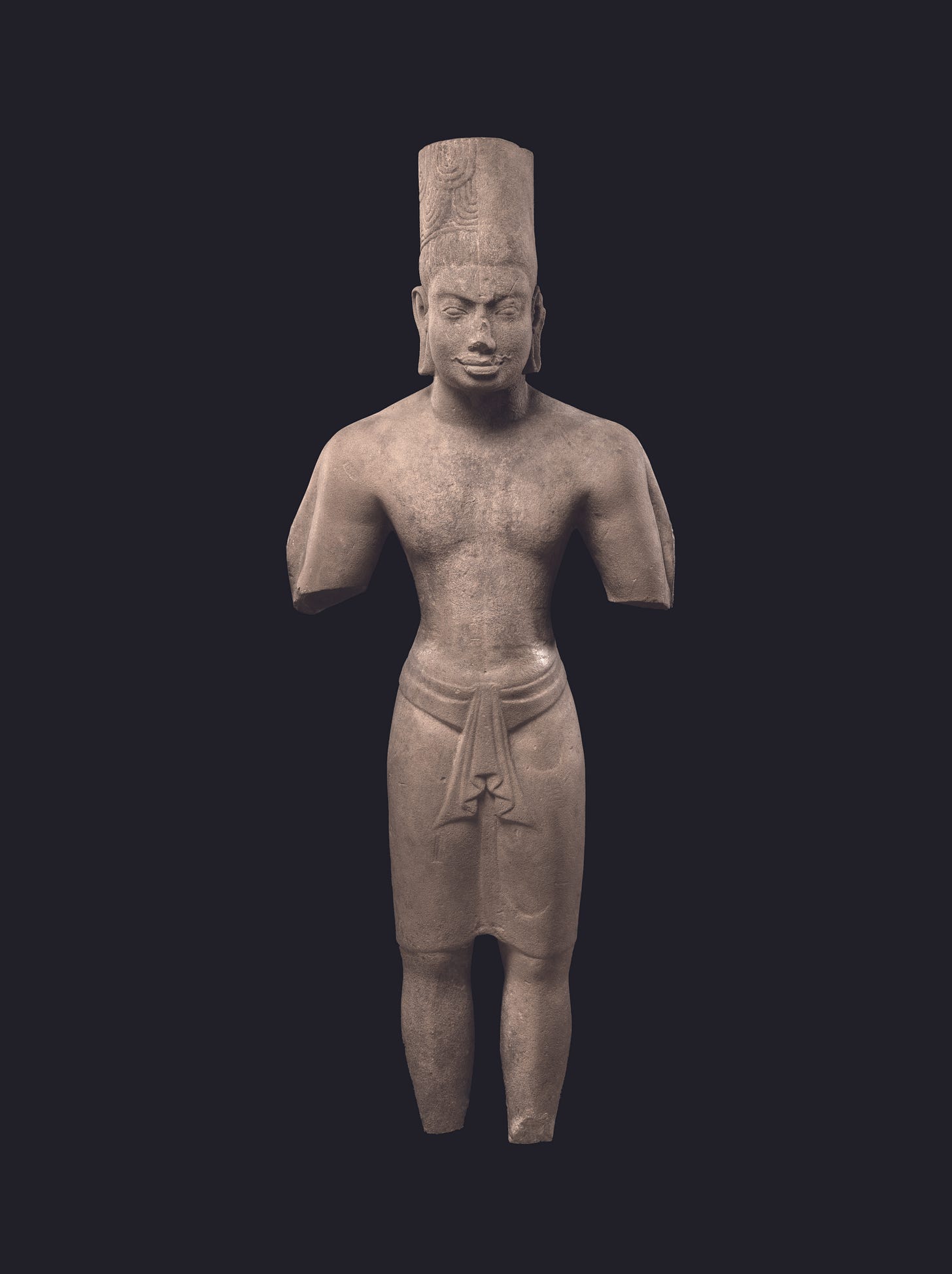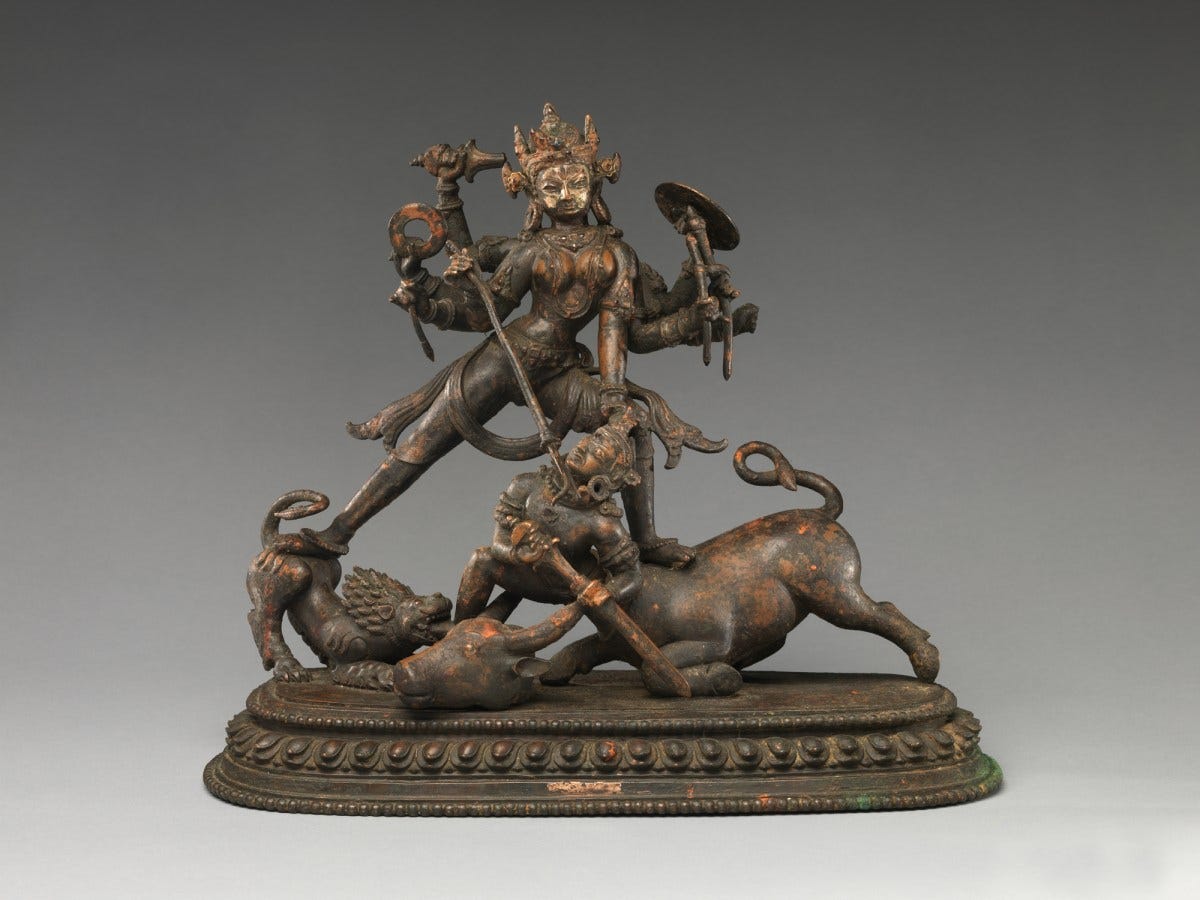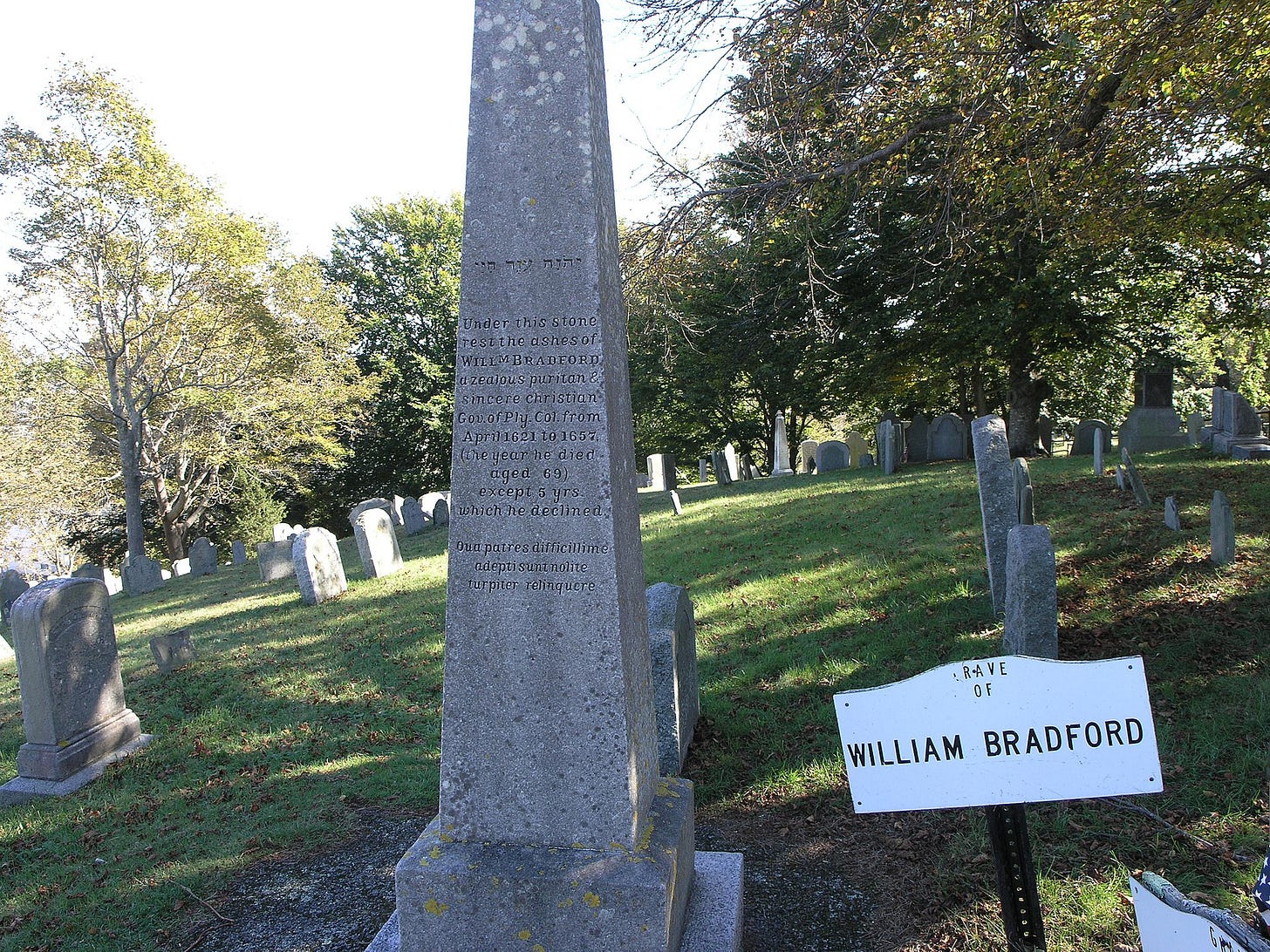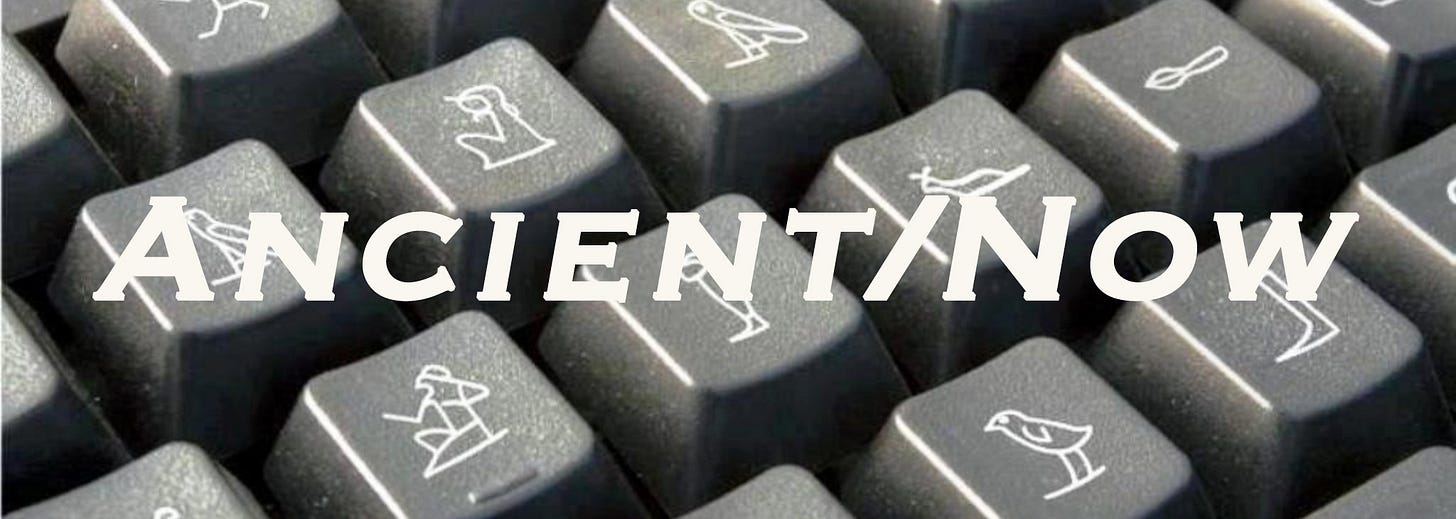Ancient/Now - April 7th
Danced prayer forbidden at The Met, the science of ancient smellscapes, improving approaches to studying America's colonial past, and more
“My danced prayer to looted Cambodian antiquities was too much for the New York museum.”

Thousands of museums own religious objects created for living rituals in religious spaces. After all, what is the difference between an altar painting in the Vatican museums and the Vatican’s Basilica of St. Peter? What is a museum’s responsibility when people want to pray with and at such religiously charged objects? Well, some shut it down. In this opinion piece on Hyperallergic Sophiline Cheam-Shapiro, a Cambodian classical dance artist, writes about an experience she had earlier this year at the Metropolitan Museum of Art when a museum guard stopped her from dancing before a statue of the Cambodian deity Harihara. (You can see video of her dance at the article link.) She writes,
Whenever I visit museums around the world that house Khmer antiquities, I pray to the gods and ancestors that inhabit them. Sometimes I simply put my hands together and chant. Other times I move. This is my tradition. It is an essential part of my identity and my relationship to these objects. When I visited the Musée Guimet in Paris, I marveled at the size and quality of its collection, which I knew had been taken from Cambodia under French colonial rule. But when I visited museums in the United States, including the Norton Simon, the Los Angeles County Museum of Art (LACMA), the Smithsonian’s National Museum of Asian Art, and the Metropolitan Museum of Art, I felt at once thrilled to encounter my missing heritage and conflicted by its dislocation from Cambodia.
Cheam-Shapiro’s point is well-taken. In many cases, looted antiquities also represent looted heritage from cultures and religions that are very much alive today. While some museums have made efforts to connect their collections to living cultures, these efforts fall short of returning them to their proper cultural context. Cheam-Shapiro continues,
That I was stopped from acting out the very purpose for which these stolen statues were created speaks directly to the reason why Cambodia is demanding their return from The Met. They don’t belong in a New York City museum, especially an uncooperative one that thinks it should define how Cambodians can interact with them. I agree with Sopheap that these artifacts belong among the temples from which they were looted.
While museums are often considered temples to art, history, and education in the Western mind, people from whom the objects were taken consider museums spaces to be killing spaces that, in a way, murder their gods. It’s time for museums to do better. Let’s discuss how artifacts came to these spaces and return looted objects to their proper homes and contexts, among the people who practice the traditions of which they are a part. If not, let them be worshipped in the ways they were intended.
Report identifies 1k objects in The Met’s collection linked to antiquities smugglers

This headline is no surprise. As museum collections around the world undergo increased scrutiny regarding their collecting practices, past and present, we will continue to see the full picture of looting in the museum world revealed in ever-greater detail. In the case of The Met, its collection has been under particular scrutiny both by New York authorities and most recently, as this article indicates, by the International Consortium of Investigative Journalists. The ICIJ discovered evidence that over one thousand artifacts in The Met’s collections have questionable provenance. Just because a collector buys something from a posh antiquities dealer with papers in hand doesn’t mean that object’s sourcing wasn’t very dirty indeed.
Spencer Woodman, one of the contributing reporters, told Hyperallergic over email that in the past year or so, The Met “has seen more seizures by law enforcement authorities than any time in its history.”
The slew of seizures raised questions for Woodman about how many objects in The Met’s collection could be attributed to people connected to illegal antiquities trade. “We thought that a basic place to start would be to ask the simple reporting question of how many pieces does The Met’s catalog link to people who have been charged or convicted of antiquities crimes,” Woodman explained. “The answer — more than a thousand — surprised us.”
Damn. That’s a staggering number for curators. These days The Met seems to be taking the brunt of negative headlines related to looting (see the story above), but it’s because The Met’s collection was built most recently, compared to the Louvre, British Museum, etc. etc. Indeed, all museum collections need to be investigated with the same scrutiny and attitude. Perhaps the methods and lessons from investigating The Met’s collections can be applied elsewhere by authorities looking at the origins of other museum collections around the world.
What did the past smell like?

Kara smells gardenias, and she immediately thinks of her mother. We’ve all had an experience in which our sense of smell has triggered memory and emotion. Our sense of smell is deeply connected to our physical experience of the world, yet it often goes unnoticed by us in our day-to-day lives because there is so little smell. Today we have lots of tools to cut down or eliminate the smells of human life—from deodorants to perfumes to air filters and air fresheners, to every day bathing, the smells of daily life in the 21st century have been ruthlessly domesticated. (Check out this cool podcast episode about sweat and smell.) But what did the past smell like? Any thoughtful historian will point out that if you used your Time Machine to travel to the past (!), as soon as you stepped foot outside, you would be struck by all the smells—some good, some very bad.
“It’s a very vital sense. Smell was also very important in the past and it was probably even more important because in the past not everything was so sanitized,” said Barbara Huber, a doctoral researcher of archaeology at the Max Planck Institute of Geoanthropology in Jena, Germany…
Odor compounds are volatile in nature — once their source is gone, they too disappear, evaporating into the air. And most smells stem from biological materials — plants, food, human and animal bodies — that decay rapidly, Huber explained.
Despite all these challenges, Huber said a few new and powerful biomolecular approaches are helping scientists decode ancient scents.
In addition to recreating ancient smellscapes, researchers are also working to preserve contemporary smells. For example, scientists at the Institute for Sustainable Heritage at University College London have decoded the chemical composition of the smell of old books in the library of St. Paul’s Cathedral in London, archiving a “heritage smell.” Book lovers will no doubt agree that the smell of a library full of old books is one of the best smells there is, and thanks to the work of these scientists it will be preserved for future generations.
Digitizing Gravestones with Photogrammetry

In Plymouth, Massachusetts there is a historic site known as Burial Hill, where some of the first Pilgrims are buried. Kerri Klein, a doctoral student in anthropology at the University of South Florida, is documenting and digitizing the historic gravestones using photogrammetry. The founder of the Burial Hill 3D Digitization Project, Klein aims to create a 3D record of the gravestones at the historic site that can be used to make them more accessible to both scholars and the public. However, Klein admits that preserving the history of a place so directly connected with colonialism can be complicated:
“A huge part of this project is: How do I decolonize this project that is almost 100 percent colonizers?” she says. While Klein understandably does not have a neat solution to this big question, it permeates her research methods.
For example, she is attempting to create a more complete record for burials that have not been very well documented in the past:
On one of the first days she spent on the hill with her camera, Klein photographed two lesser-documented burials she felt required more care. One was the gravestone of Charles B. Allen, a Civil War veteran who fought as part of the Fifth Massachusetts Colored Volunteer Cavalry, Massachusetts’s only all-Black cavalry regiment. The other was the grave of Nancy Williams, a Black woman who worked as a servant and who passed away at the age of 25.
Klein also points out that the site should also be viewed through the lens of the indigenous inhabitants of the area, the Wampanoag people. Burial Hill is the resting place of Tisquantum, the Wampanoag who taught the Pilgrims how to farm the land. Grave markers are biased by their very materiality; only the rich could commission such monuments. Studying and preserving the past will always be a process full of biases and flawed methodologies, but it is encouraging that current researchers are keenly aware of these pitfalls and are aiming to improve their approaches to documenting the past.
The Grand Egyptian Museum’s innovative display cases

Goppion, a company based in Milan, Italy, recently revealed itself as the designer, manufacturer, and installer of over one hundred display cases for the Grand Egyptian Museum. These specially designed, innovative cases will hold some of the GEM’s most priceless and fragile artifacts, including the ostrich feather fan from Tutankhamen’s tomb.
All in all, Goppion display cases were an ideal choice for the museum due to their functional and aesthetic qualities. Among them, LED adjustable lighting, 0.1 airtightness, security concealed locks, magnetic concealed gaskets, glass joints and passive and active climate control (to manage relative humidity, temperature and nitrogen levels). All of this is combined with a wide range of personalized interiors, which may include adding plinths, panels, shelving, back panels, partitions and other versatile design elements.
It was a huge project that had to be executed in distinct phases, but Goppion proved themselves up to the task of creating cases that will preserve, protect, and display the ancient treasures of the GEM so that visitors to Egypt can marvel and experience them in person.
What else were we reading this week?
Here are some other stories that got our attention this week!
Take a virtual tour of Amenhotep III’s palace at Malqata
NYT: X-ray technology has allowed researchers a glimpse at the reaches of the Yellowstone landmark’s prized stone and its importance to Indigenous people
Smithsonian Magazine: The Mystery of a Petroglyph-Covered Alaskan Beach
NYT: Rare Coin, Minted by Brutus to Mark Caesar’s Death, Is Returned to Greece
NPR: How art sleuths reunited a family after centuries apart
Israel Claims Rare Paleo-Hebrew Papyrus Recovered—But questions remain
The Atlantic: Are Ancient Phallic Objects ... Exactly What They Look Like? Archaeology has long shied away from describing artifacts as sexual, but things may finally be changing
Listen 🎧 - Judith Bunbury: Unearthing the secrets of Ancient Egypt
From BBC News World Service:
Think Sahara Desert, think intense heat and drought. We see the Sahara as an unrelenting, frazzling, white place. But geo-archaeologist Dr Judith Bunbury says in the not so distant past, the region looked more like a safari park.
Lecture: Rethinking Early States: Ancient Egypt, and Beyond (David Wengrow)
One more thing…
For those of you who may have been inspired to consider traveling to Egypt after our recent Afterlives of Ancient Egypt podcast episodes on travel, don’t take our word for it—listen to Rob Lowe!







